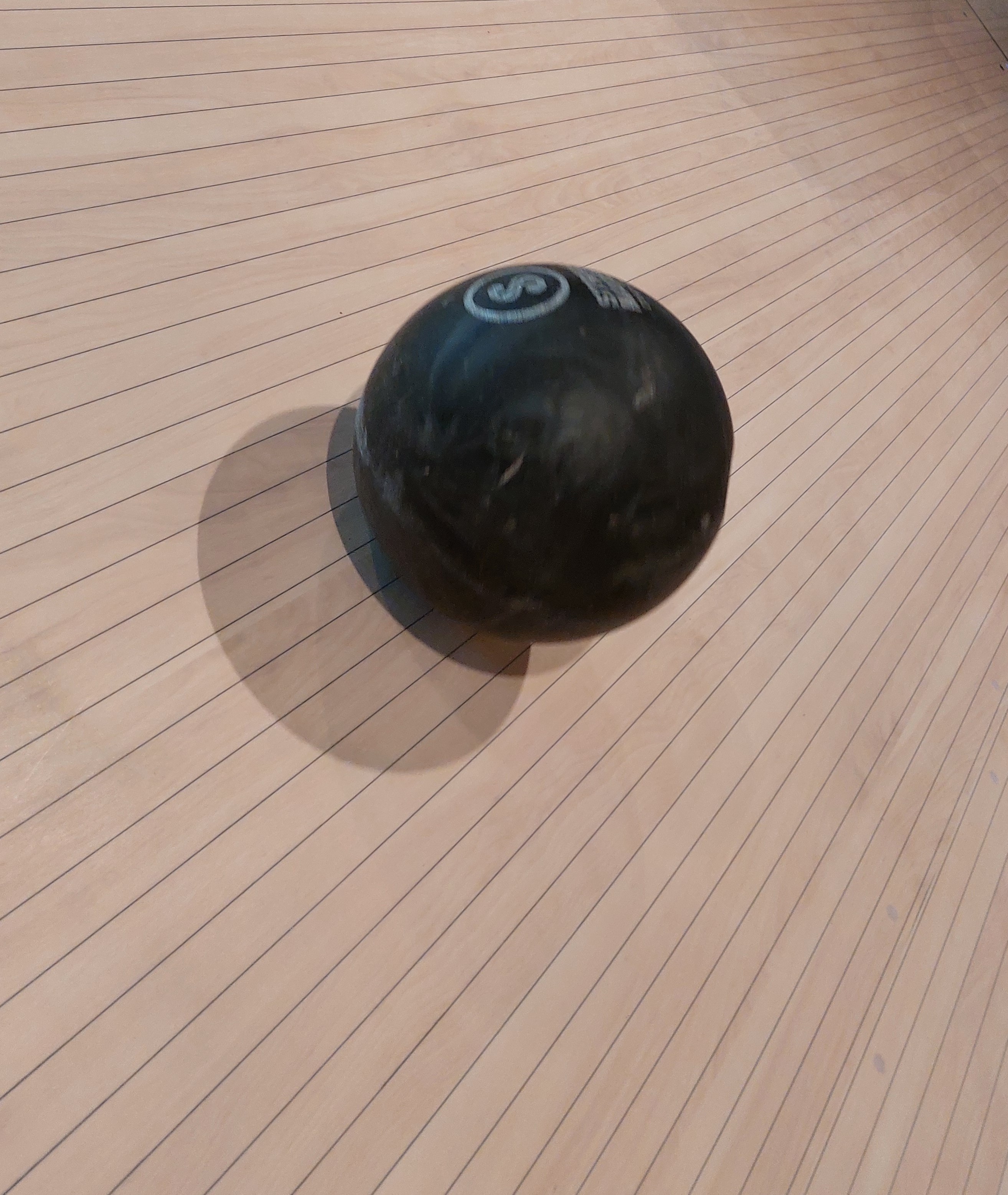19.4. Force and motion with a bowling ball#
| Authors: | Ed van den Berg, Loran de Vries & Onne Slooten |
| Time: | 15-20 minutes |
| Age group: | Grade 10 and up |
| Concepts: | Force, motion, Newton's laws |
Introduction#
How can you experience force and motion in person without too much interference from that annoying, always present friction? With a bowling ball! During this demonstration in the hallway or gymnasium, some students try to influence the direction of a bowling ball with brooms and feel the essence of Newton’s first and second law.
Equipment#
Heavy bowling ball
Broomstick
Large empty space (hallway, gym)

Fig. 19.10 A track including a pole to experience how ‘easy’ it is to make turns.#
Preparation#
Be careful to remove any objects that are of value and can break! A rolling bowling ball can cause damage!
First try yourself how you can influence the movement of a bowling ball with the broom, both with accelerated and decelerated linear movements and with turns.
Tip
Students can gain similar experiences with a heavily loaded supermarket cart. There too you feel how difficult it is to change direction and that the new direction is a superposition of the direction of the original speed and the applied force.

Fig. 19.11 As the ball is heavy, friction hardly plays a role allowing to investigate Newton’s laws of motion.#
Procedure#
During the demonstration, we follow various steps.
1. Accelerating the bowling ball from rest (with the broom).
You can’t accelerate without a broom, the broom has to give you a push.
2. Stopping a moving bowling ball.
Without a broom it is difficult or impossible to slow down, the broom has to push you to slow down.
3. Maintaining constant speed when moving bowling ball.
With a heavy bowling ball you hardly have to do anything to maintain constant speed (Newton’s first law!). The heavier the ball, the smaller (relatively) the influence of friction.
4. Take the bowling ball from start to finish and back as quickly as possible without overshooting the start/finish lines.
This will take skill and some practice, perhaps a fun activity for the section to try out before the demonstration. Both acceleration and deceleration require force (the broom). The ball has a great tendency to roll (inertia).
5. Make a moving bowling ball make a sharp turn to the right (or left).
Making a turn requires a force that causes a change in direction. Please note, a right-angle turn is impossible, the ball has a great tendency to roll in the original direction. The new direction is a sum of velocities in the original direction and the force direction.
6. Pass the bowling ball through a curve at a constant speed.
How do you keep the speed constant during (part of) a circular movement? Only if the force of the sweeping is always perpendicular to the direction of movement.
The physics teacher can explain this very logically with some vectors, but perhaps this becomes more plausible for students through experiences with the bowling ball.
7. Try to make a circular motion with the bowling ball at a steady speed.
There is room for discussion here. Let students try it first. Then the question arises in which direction the force must act to go through a bend with constant speed (regardless of direction)? Perpendicular to the direction of movement! One of us did this in the gym where a circle had already been drawn. Everyone tried to hit the ball from the outside of the circle, but one girl had a clever method of raking from it center of the circle.
8. Try to follow a route like the one in the image above.
9. Students work in pairs to formulate the rules about the influence of forces on the movement of the bowling ball.
A question to check students’ understanding: Memphis is standing 10 meters in front of the center of an open goal. He receives a hard cross from Bergwijn’s left and hits it exactly at right angles, perpendicular to the direction of travel. Explain with a drawing and reasoning why the ball might not go into the goal.
Physics background#
Newton’s first and second laws are key here: The heavy bowling ball continues straight at a constant speed unless a net force is applied. With the broom you can change both the size and direction and speed of the ball.
